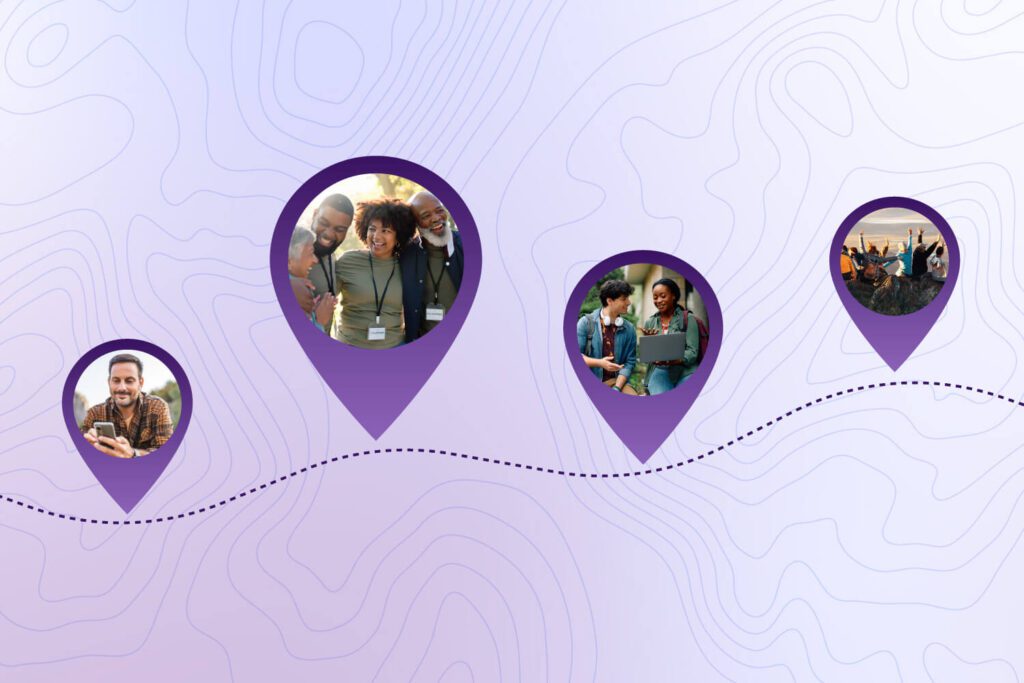For many nonprofit organizations engaging in advocacy work, lobby days are an important part of every legislative session. An opportunity to put your organization’s supporters directly in front of their elected officials can play a huge role in swaying important policy decisions, and it’s a great way to get volunteers involved in your work.
While traditionally in-person, lobby days can easily be modified for online spaces, allowing a wider range of your supporters to participate. With a few digital tools, you can take any lobby day virtual and still maintain the impact of in-person office visits.
What is a lobby day?
A lobby day is an event that brings supporters together to meet with legislators to address and advocate for a particular cause. Also known by other names like fly-in, advocacy day, advocacy summit, and Hill day, this event is an effective method for influencing political decisions due to the direct interaction between constituents and legislative decision makers.How do you launch a virtual lobby day?
In recent years, nonprofits have creatively adapted to changes in technology and supporter preferences by organizing more virtual and hybrid events, including moving their lobby days online. Just like a standard lobby day, virtual lobby days will look slightly different for each organization. In most cases, virtual lobby days involve conducting a virtual information session for your advocates followed by scheduled virtual meetings between the advocates and their legislators. Your virtual information session should take place either first thing in the morning or a day or two before your scheduled lobby day. It can take the form of a virtual town hall, webinar, or other online informational session to prepare your advocates with all of the information they’ll need for conversations with their legislators. To host a useful information session, you should:- Bring together subject matter experts, community leaders, and general members of the public for interactive discussion.
- Put together a planned informational program led by experts and leaders.
- Host a Q&A where attendees can ask questions and respond to topics brought up in the discussion.
What tools do you need for a virtual lobby day?
Now that you know how virtual lobby days work, let’s take a look at some of the tools that will simplify both the planning and execution of your event.Event management with Zoom integration
Any event, whether it’s in-person or online, requires a dedicated level of preparation and management. Your virtual lobby day still involves the typical responsibilities required for hosting an in-person event, such as:- Promoting the event
- Setting up registration
- Sending email and text reminders
- Creating RSVP and check-in forms
- Reporting attendance
Click-to-call, tweet, and email
Click-to-call and other digital advocacy tools can be great options for legislative contact if supporters aren’t able to attend a scheduled lobby day. Other than in-person conversations, calling legislators is one of the most effective ways of bringing an issue to their attention. Online social advocacy forms allow organizers to quickly mobilize supporters to tweet at their elected officials, get the issue trending, generate grassroots momentum, and keep the issue on their legislator’s agenda. Using an advocacy form to prompt emails to a legislator makes the process easy for all parties involved, and providing different options for advocacy gives more supporters the opportunity to participate. Plus, these options can be a great follow-up after the lobby day has ended.The results of lobby days
In addition to impacting legislation, lobby days give nonprofits the opportunity to raise awareness about their nonprofit’s purpose, build community, engage with their supporters, and drive acquisition.
Ready to Get Started?




